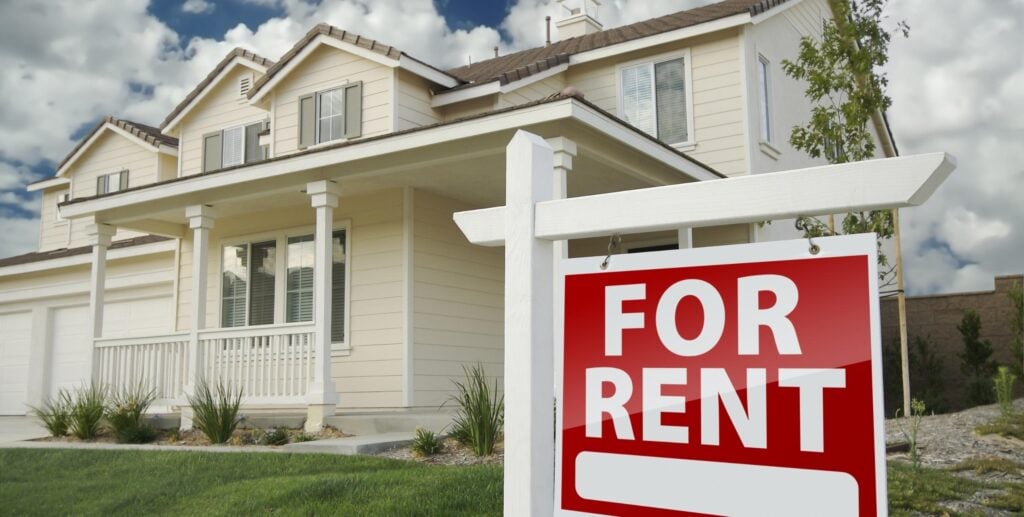
The real estate market (as well as about every other part of the economy) has been quite difficult to gauge since COVID-19 arrived in April 2020, to say the absolute least. The stock market collapsed and then had a V-shaped recovery before sliding back and then climbing again.
Real estate prices shot up faster than at any time in history during the second half of 2020 until the early parts of 2022. Then, after interest rates were increased faster than they had been at any time in this century, real estate prices stalled and flatlined.
Home prices have been on a roller coaster, to say the least. And rent prices have been no different.
Where Rents Have Been the Past Few Years
At the beginning of 2021, rents began to skyrocket in an unprecedented way. In large part, this was due to a lack of supply from an already undersupplied housing market that was then further crippled by the delays in new construction brought on by the pandemic.
Rents increased an enormous 16% year over year in 2021 and continued to grow in 2022 before finally slowing and reversing course in 2023.
Part of the decline had to do with an increased turnout in new construction. As RealPage notes, “new supply appears to be the strongest deterrent of rent growth.”
Another factor was that we had simply reached the limits of affordability, especially with the high inflation suffered throughout 2022. This means more young people (nearly half of those aged 18 to 29) are living with their parents. This trend may very well be pushing young couples to live together earlier than they otherwise would have. (A surprising 11% of couples aged just 18-24 now live together.) Over 1 million Americans live in RVs (and RV ownership has increased 62% in the last 20 years).
And we’ve also seen the popularity of sites like SpareRoom.com and SharingHousing.com grow significantly. These sites allow people to rent out just a room instead of an entire house or apartment.
Thus, as any economics textbook will teach you, people respond to incentives. Prices have become unaffordable, particularly in large coastal cities, so tenants and prospective tenants have responded by downsizing, moving in with parents, friends, or romantic partners, and using a host of other ways to make things work. This trend, along with a wave of newly built properties easing things on the supply side, has caused rents to come down modestly in 2023.
Indeed, as real estate prices have stalled, by March 2023, the price-to-rent ratio has fallen 7.9% year over year.

As of October 2023, according to Realtor.com, national rents had declined 0.5% year over year for 0-2-bedroom properties. But remember, inflation is still close to 4%, so in real terms, rent has declined almost 5%.
Where Will Rents Go in 2024?
While single-family housing construction has fallen off, in July, there were actually more multifamily housing units being built than at any time previously. That’s incredible to hear, given how high interest rates are right now, but it does mean that new multifamily inventory will alleviate some supply issues in the rental market.
RealPage believes this means “rents will face considerable downward pressure despite otherwise steady demand.” Still, the website expects occupancy rates to stay “consistent with historical norms, that is, the U.S. figure in the lower 94% range” in 2024.
Inflation is also down while wages are up, but Americans are also spending less, and many live in economically precarious situations. The fear of a global recession still exists despite increasing hope of a soft landing.
If inflation continues to fall and the economy stays stable, more people will likely start looking to rent on their own again, and the various adjustments to save on rent will become less common. This would put some upward pressure on rent—especially since, with high interest rates, buying is now 52% more expensive than renting nationwide, and thus, more people are looking to rent than buy.
That being said, RealPage also points out that “the resumption of federal student loan repayments could be something that erodes the share of wallet that American households are allocating towards debt repayment,” which could force many Americans to retrench similarly as they did in 2023.
Overall, RealPage agrees with Globe St.’s analysis, which concludes that “In 2024, economists largely expect the rental market to continue softening.”
Final Thoughts
My analysis is similar. While economic predictions should always be taken with a grain of salt, it would appear very unlikely that rents would rise substantially in the coming year. Rents have already risen enormously and pressed Americans to the limit of affordability throughout the country. Many new units are about to become available, and economic uncertainty, along with the resumption of student loan repayments, will keep Americans cautious.
While the recent reduction in inflation and solid growth hopefully means the American economy is strengthening, there is still much to be concerned about. If the economy stays solid, we could see a small amount of growth in rental prices, at least in particular submarkets.
But I suspect rents will be flat or likely even decline slightly throughout 2024 before starting to grow steadily again in 2025. Either way, I certainly wouldn’t make any big bets on rent prices increasing substantially anytime soon.
For more on next year’s real estate outlook, check out our 2024 State of Real Estate Investing Report.
Note By BiggerPockets: These are opinions written by the author and do not necessarily represent the opinions of BiggerPockets.





